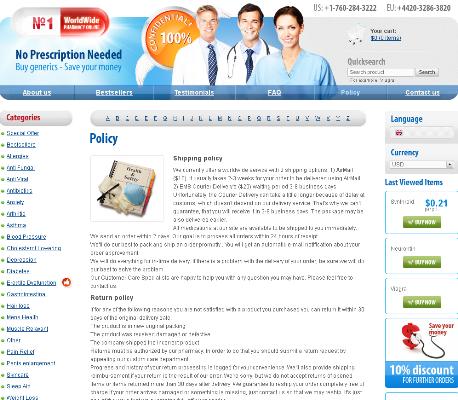Understanding Tobradex and Its Uses
Tobradex is a prescription medication that combines tobramycin, an antibiotic, and dexamethasone, a corticosteroid. It's commonly used to treat eye inflammations and bacterial infections. The antibiotic component of Tobradex helps in eliminating harmful bacteria, while the corticosteroid reduces inflammation and swelling.
Patients may be prescribed Tobradex for conditions such as conjunctivitis or keratitis, wherein bacterial infections lead to inflammation - leading to troubling symptoms. Recieve **proper dosage instructions from your healthcare provider to ensure its effectiveness.**
| Component | Function |
|---|---|
| Tobramycin | Antibiotic |
| Dexamethasone | Corticosteroid |
Common Side Effects of Tobradex

Tobradex, a medication combining tobramycin and dexamethasone, is often prescribed to treat eye infections and inflammation. However, its usage may lead to some common side effects. You might experiance sensations such as mild burning or stinging upon application, which are generally temporary. Additionally, blurred vision or dryness can occur, making daily tasks slightly challenging.
Sometimes, prolonged use of Tobradex may lead to more noticeable symptoms. These can include increased eye redness, itching, or swelling around the eyes. Furthermore, some users might experience sensitivity to light, which could interfere with routine activities. It is crucial to monitor these reactions, as they can vary in intensity.
Most side effects occurr within the initial days of treatment and may subside as your body adjusts. However, persistent discomfort should not be ignored. Keeping track of any unusual changes and discussing them with your healthcare provider can help manage these effects effectively.
Monitoring Your Body's Reaction
When using Tobradex, it is crucial to carefully monitor how your body reacts to the treatment. Some individuals may experience mild side effects that are temporary, while others might notice more persistent issues. Pay close attention to any changes in your vision, such as blurred vision or eye discomfort, as these could be indicative of underlying complications.
Occassionally, more severe reactions can occur, so it’s advisable to keep a detailed record of any symptoms that develop over time. Note down their onset, duration, and intensity. This documentation will help you and your healthcare provider determine whether the treatment is progressing well or if adjustments are needed.
Make it a point to routinely check for any signs of inflammation or infection, as untreated symptoms can lead to more serious conditions. Don’t ignore any sensations that feel out of the ordinary; instead, meticulously track these occurrences to ensure that you catch any potential issues early. Proper monitoring is key to effective managment of your Tobradex treatment.
Effective Ways to Alleviate Discomfort

Managing the discomfort that might arise from Tobradex use can be approached through several practical strategies. First and foremost, ensuring proper application is vital. Wash your hands thoroughly before using the eyedrops to avoid introducing germs, which can worsen symptoms. Applying a warm compress to the affected eye for a few minutes can help soothe irritation and reduce inflammation. Additionally, keeping the eye area clean and dust-free plays a significant role in minimizing discomfort. Many find that switching to a preservative-free artificial tear solution provides additional relief, as it lubricates the eye without causing further irritation.
Listening to your body is equally crucial when using Tobradex. If you experience significant discomfort, it is wise to pause any activities that strain the eyes, such as screen time or reading, to give them a break. Staying well-hydrated and maintaining a balanced diet rich in anti-inflammatory foods can also support overall eye health. In some cases, mild over-the-counter pain relievers may help alleviate discomfort, but always consult your healthcare provider before adding any new medications to your regimen. Remember, attentive and proactive managment of side effects not only ensures better treatment outcomes but also enhances your quality of life.
When to Seek Medical Attention
Recognizing when to seek medical intervention during Tobradex treatment can be a crucial step for your health. If you experience severe or persistent side effects such as vision changes, intense burning sensations, or swelling around the eyes, it's time to contact your healthcare provider. These symptoms may indicate an adverse reaction that requires immediate attention.
Moreover, should symptoms like eye pain and redness worsen or last longer than initially expected, don't hesitate to seek medical advice. Your body's response to medication can vary, and distinguishing between common side effects and serious issues is vital. Teh table below outlines urgent signs to watch for:
| Symptom | Action Required |
|---|---|
| Vision changes | Contact healthcare provider immediately |
| Intense burning sensation | Seek medical advice promptly |
| Eye swelling | Immediate attention needed |
Tips for Communicating with Your Healthcare Provider
Effective communication with your healthcare provider is crucial for managing the side effects of Tobradex treatment. Start by preparing a list of your symptoms, noting when they began and how they have evolved. Details like these help create a comprehensive picture of your health, which is vital for accurate diagnosis and treatment. It’s also beneficial to document any other medications you are taking, as interactions can sometimes exacerbate side effects.
Don’t hesitate to ask questions if you’re unsure about anything. Teh more informed you are, the better you can manage your health. Inquire about what side effects are common and which are cause for concern. This helps you distinguish between normal reactions to the medication and symptoms that might require further medical attention.
Be honest about your condition and how you’re feeling. If a symptom is particularly bothersome or persistent, mention it explicitly during your consultations. Healthcare providers can offer solutions or adjust your treatment plan to better acommodate your needs. Open dialogue ensures that you receive the most effective care possible.
Finally, schedule regular follow-ups to monitor your progress. These appointments provide the opportunity to discuss any new symptoms that have occured and to make necessary adjustments to your treatment plan. Being proactive in your communications will go a long way in ensuring your well-being during Tobradex treatment.

